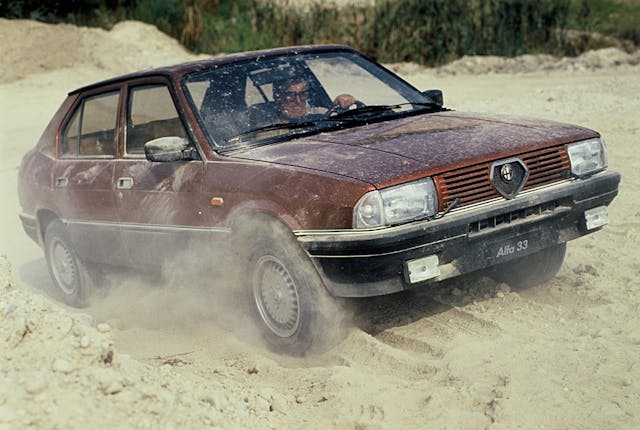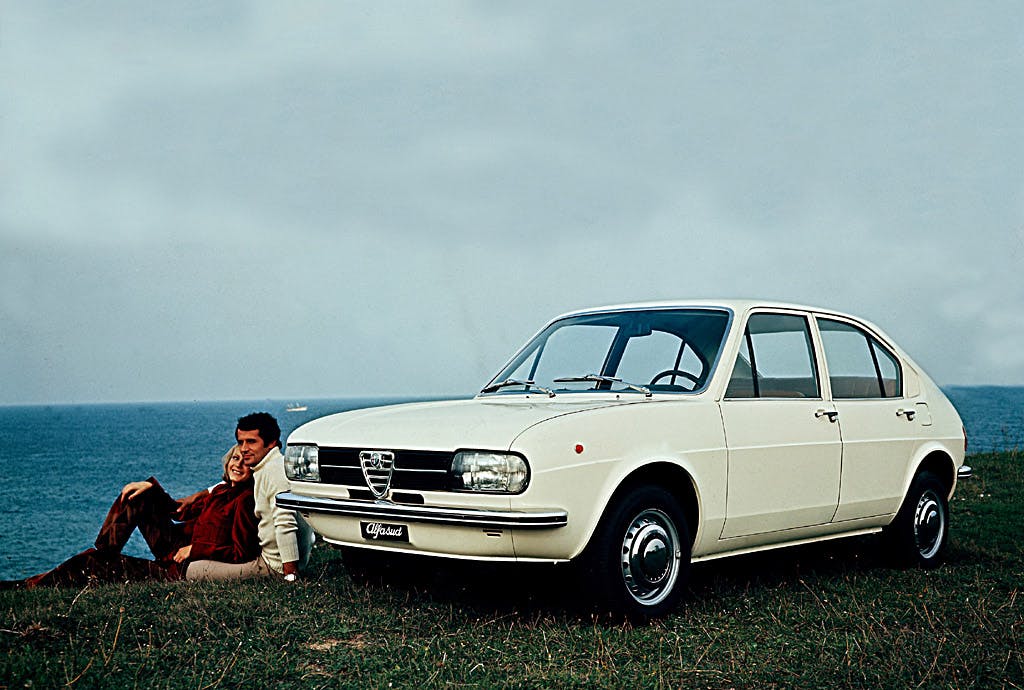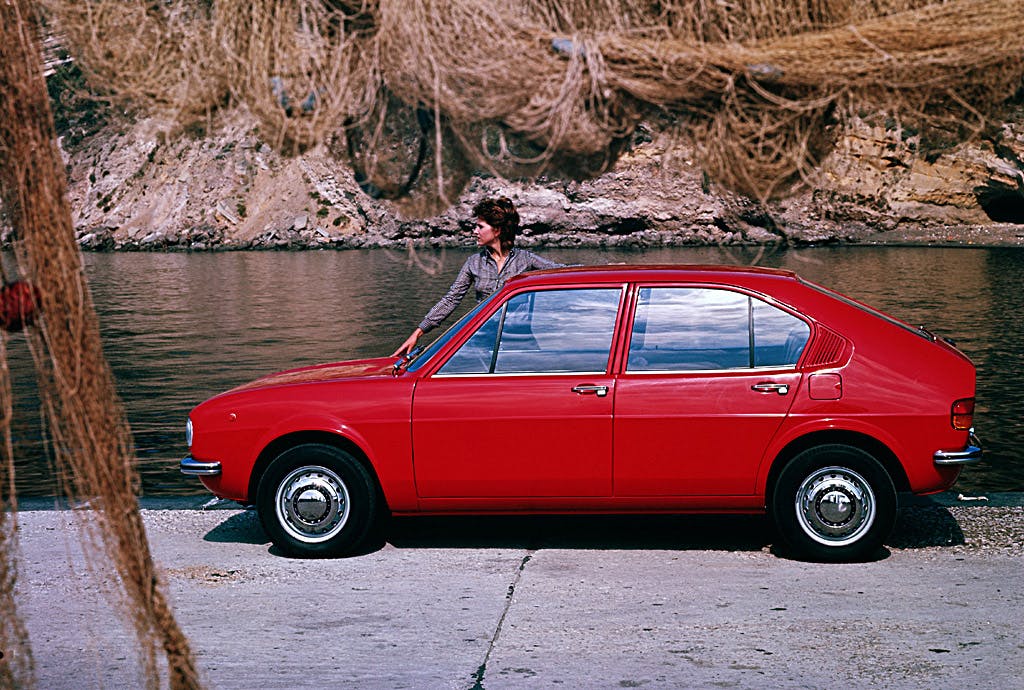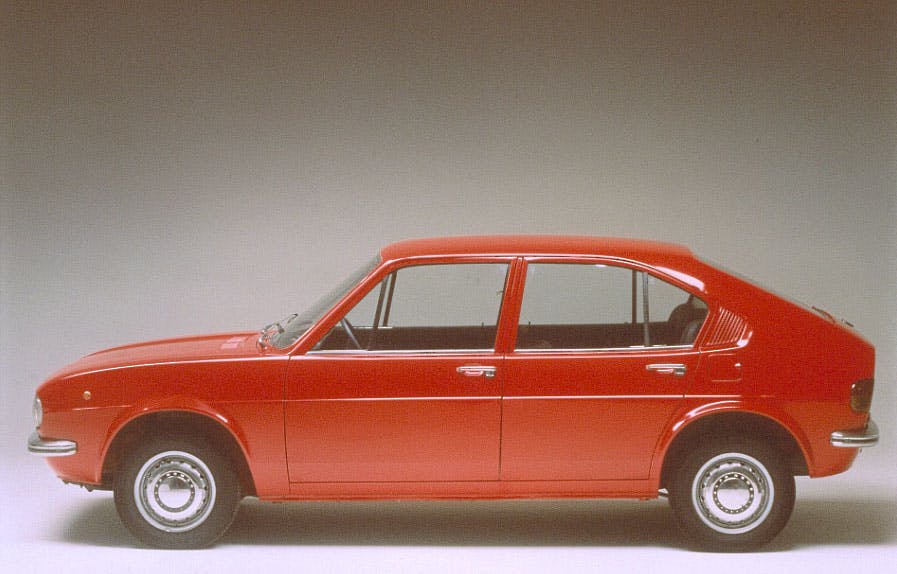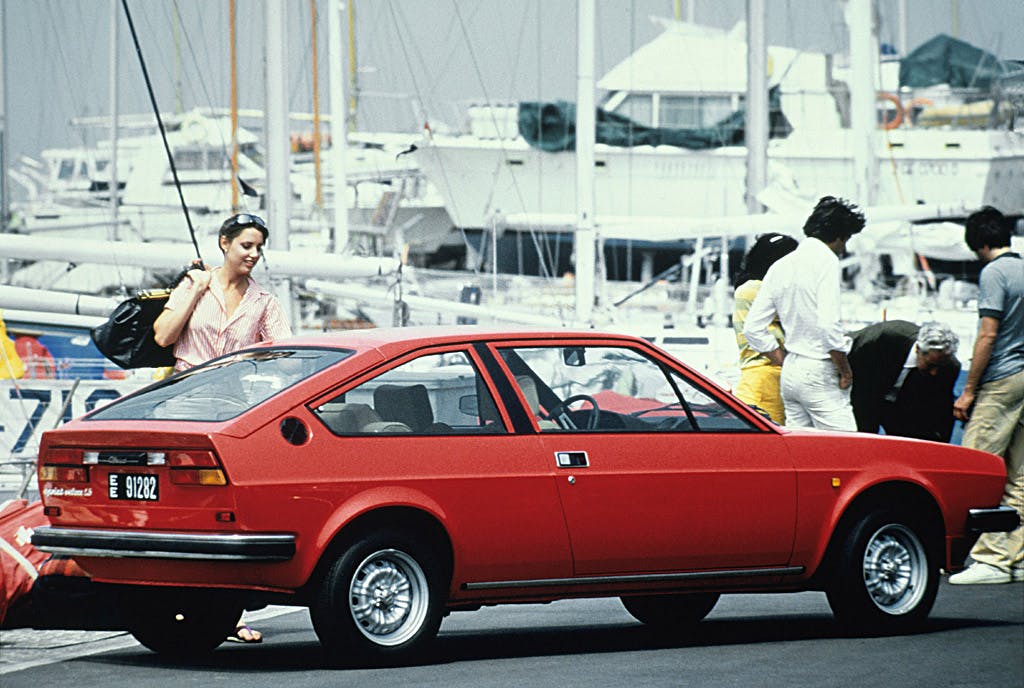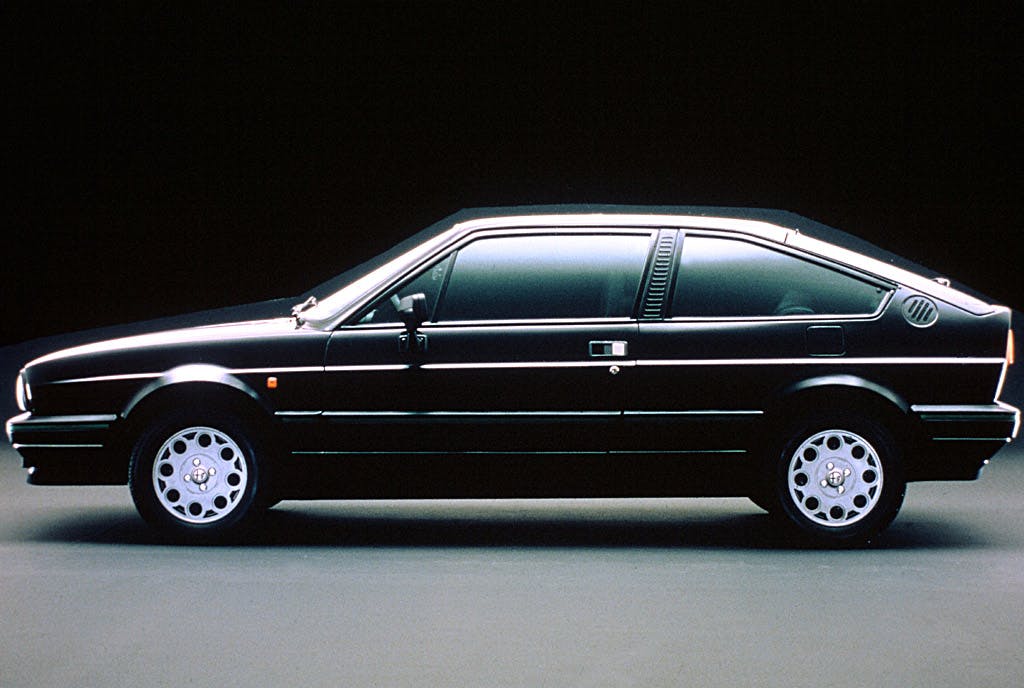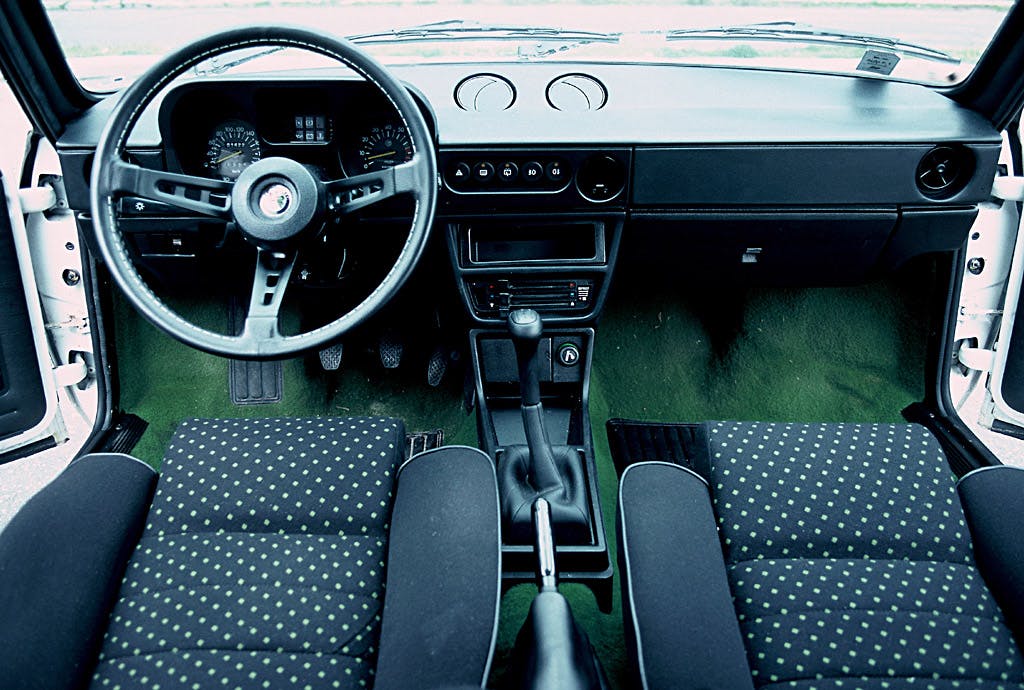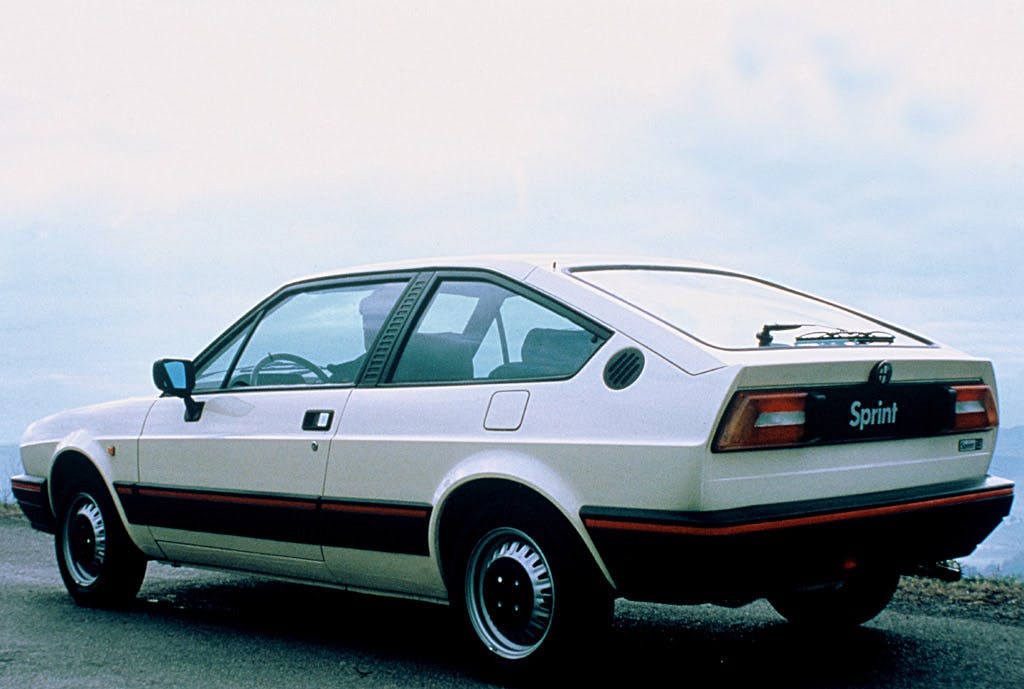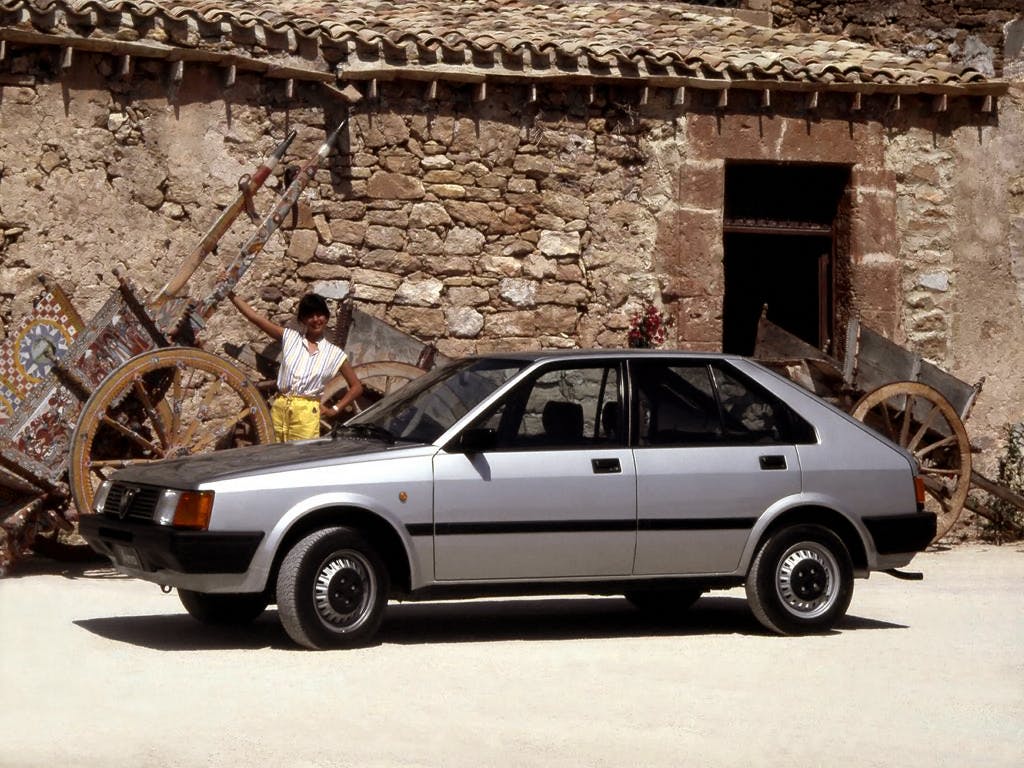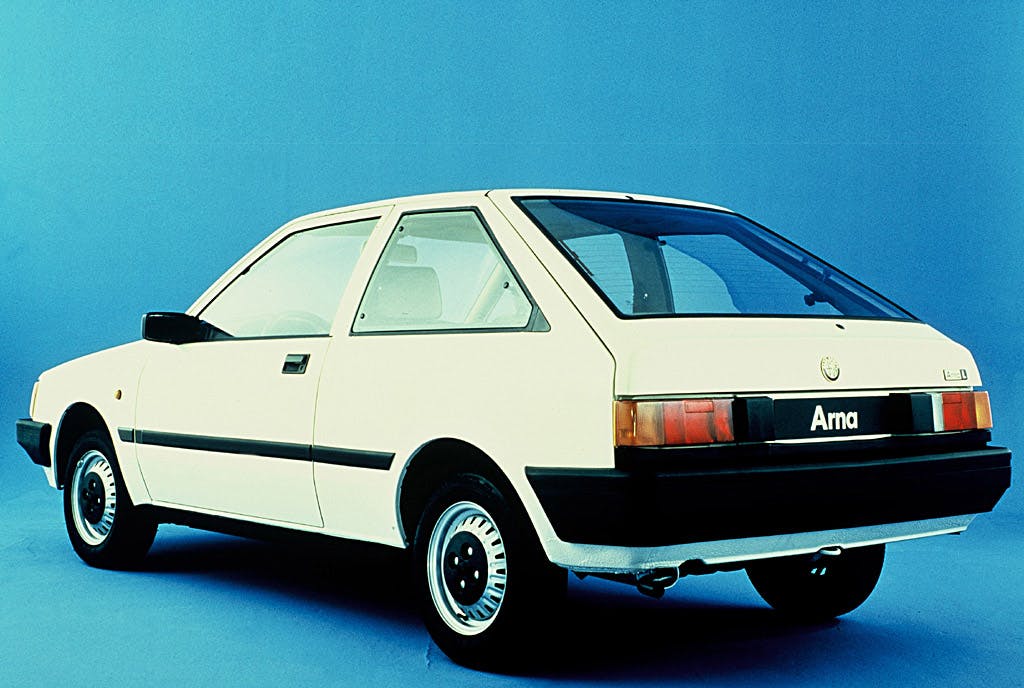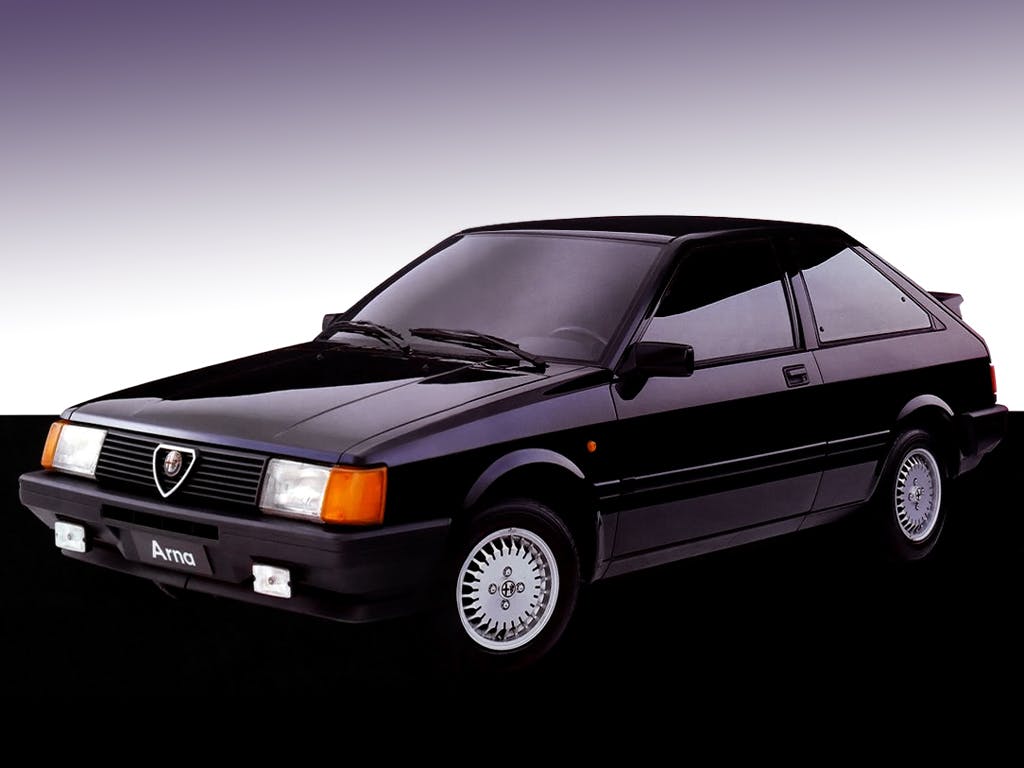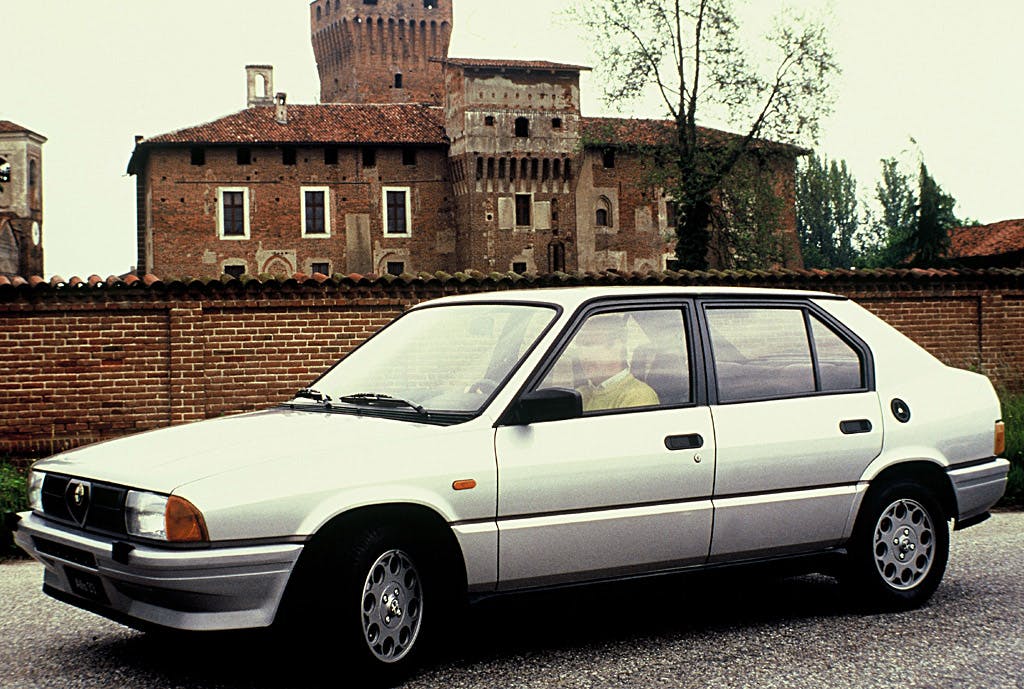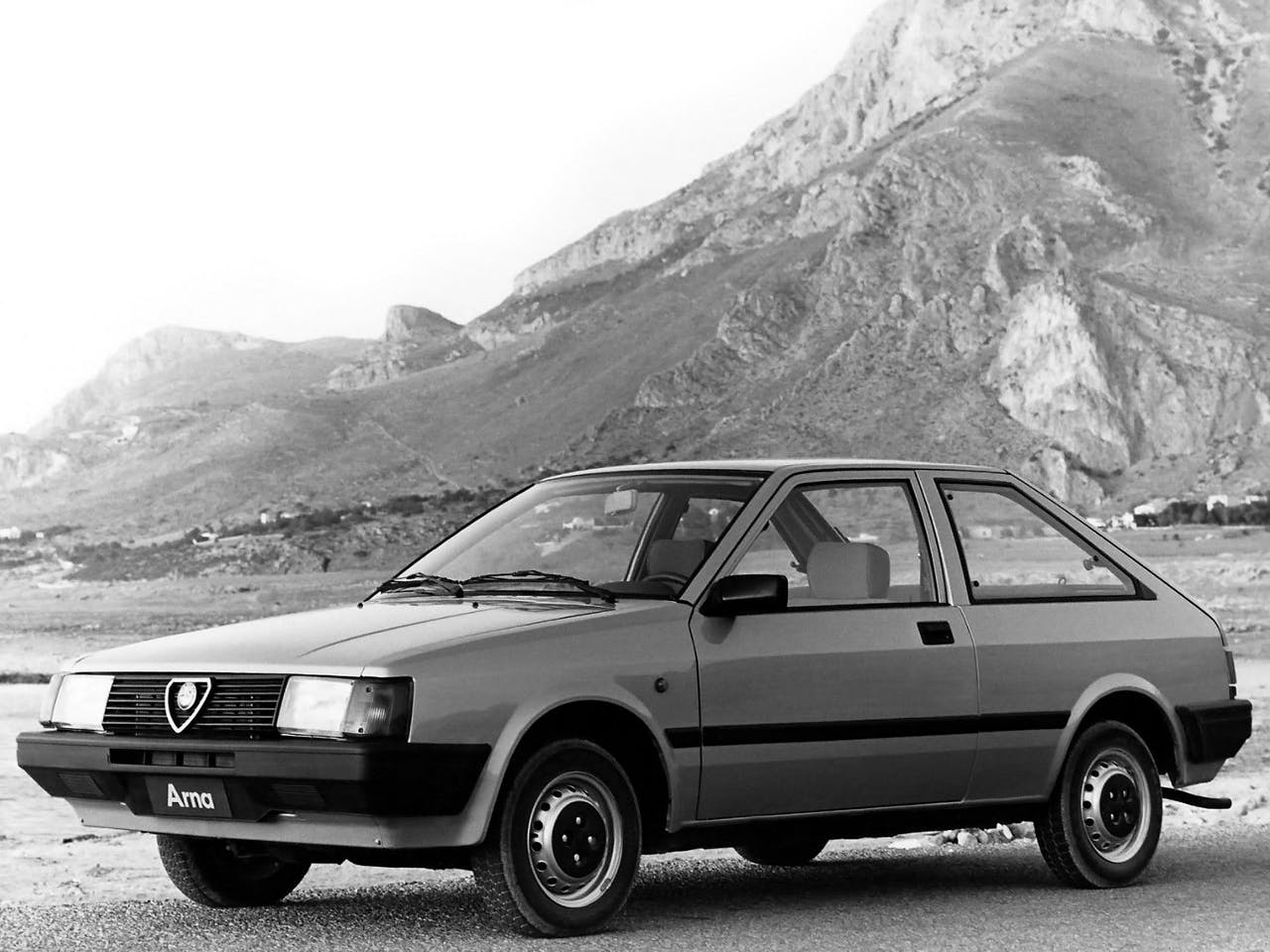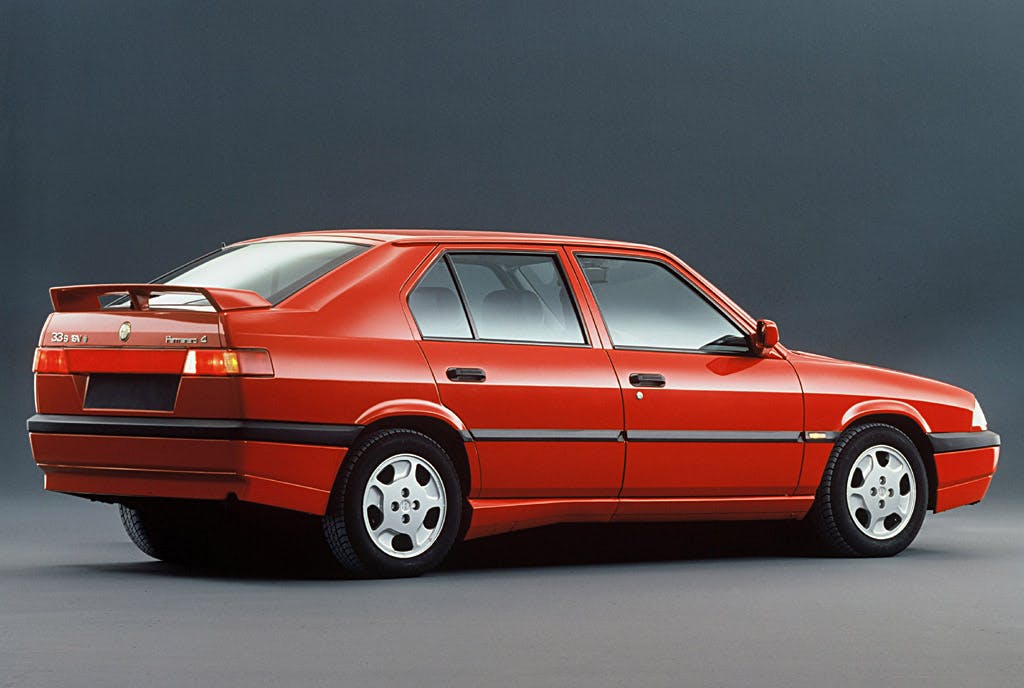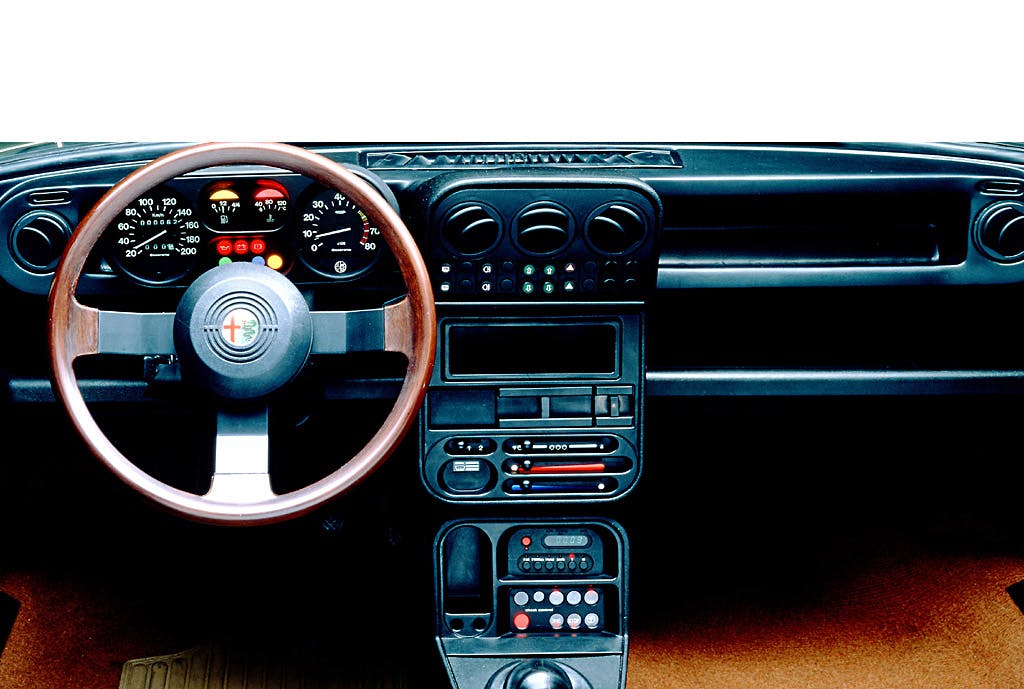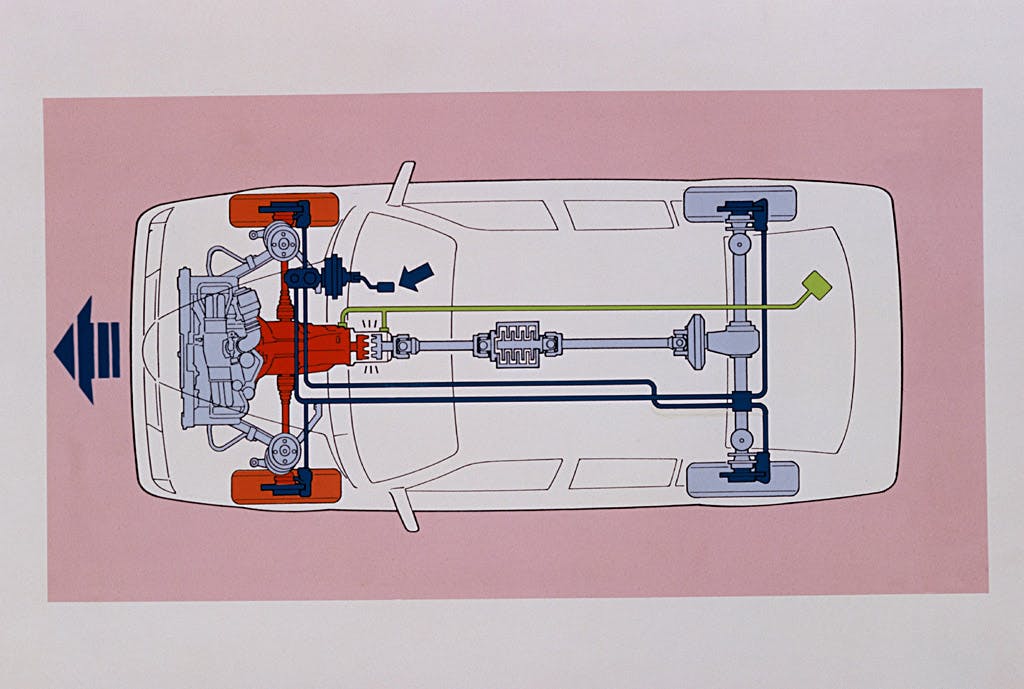These 5 Alfa front-drivers never made it stateside
In the United States, enthusiasts tend to associate Alfa Romeo with tail-happy rear-wheel-drive hysterics—a Mediterranean alternative to BMW, perhaps. Across the pond, the company is just as well-known for offering a long line of humble front-wheel-drive cars with flat-four engines. Models like the Alfasud Sprint have long demonstrated that an Alfa Romeo doesn’t need to be rear-wheel-drive to be fun. Here are some of the Italian brand’s most plucky, aspirational small cars that never made it stateside:
Tipo 103 (1959)
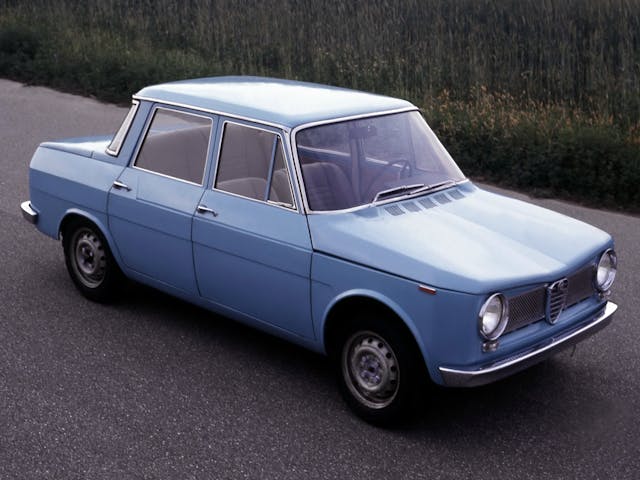
This one is more of an origin story than a strict entry, because the Tipo 103 never got far off the ground. Alfa Romeo made its first serious attempt at downsizing when it launched the project in 1959. The aim was to develop a car that was compact, cheap to buy and operate, and powered by a relatively small engine. Engineers came up with a boxy, four-door sedan that stretched about 141 inches from bumper to bumper, meaning it would have neatly filled the gap between the Fiat 600 and the Simca 1000—had it gone on sale. Put another way, the Tipo 103 was about as long as a modern-day Fiat 500.
Like many of its peers and rivals, Alfa Romeo realized that adopting front-wheel drive was an effective way of building a car that was both small and affordable. Power for the Tipo 103 consequently came from an 896-cubic-centimeter four-cylinder twin-cam engine that sent 52 horsepower to the front wheels via a four-speed manual transmission. It was mounted transversely, a first in Alfa’s long history.
Alfa Romeo envisioned what could have stood out as one of the most innovative sedans of its era. Fiat didn’t put its name on a front-wheel-drive car until it launched the 128 in 1969, though its Autobianchi division tested the waters with the Dante Giacosa-designed Primula that was released in 1964.
In the end, unfortunately, the Tipo 103 project never made it to production. It was canned in 1961, ostensibly due to cost reasons. Alfa Romeo had a lot on its plate; it was in the process of renewing its entire range of cars, and the Renault models it built under license filled some existing demand for a small, volume-oriented car. Designers nonetheless borrowed styling cues from the sedan as they penned the Giulia, and some historians argue the Renault 8 was inspired by the Tipo 103.
One Tipo 103 prototype and three drivetrains remain, according to the company’s archives department.
Alfasud (1971–1983)
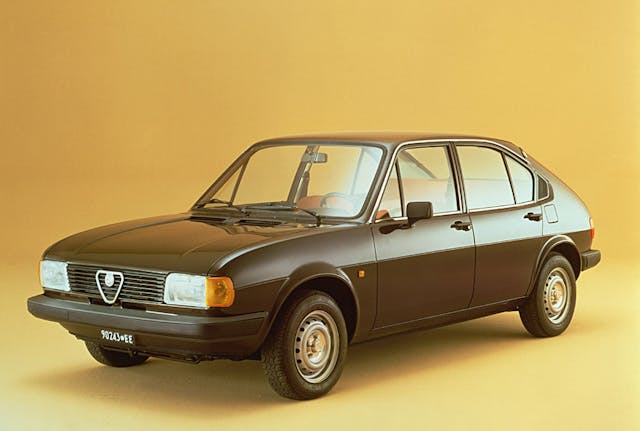
Alfa Romeo again turned its attention to the bottom part of its range in the late 1960s. Its bigger cars sold well, especially in the United States, but they remained out of reach for many Italian buyers. Rather than update the Tipo 103 prototype, the Milan-based firm chose to develop a new car named Alfasud.
Significantly, the Alfasud was Alfa Romeo’s first mass-produced front-wheel-drive car. It was presented at the 1971 Turin auto show with a 1.2-liter flat-four engine that sent 63 horsepower to the front wheels via a four-speed manual transmission. It featured four-wheel disc brakes (including inboard front rotors to reduce unsprung weight) and an independent front suspension; going small wasn’t an excuse to compromise on handling. Sales started in 1972, though only the four-door model was offered at launch.

As its name clearly implied, the Alfasud was built in a newly-renovated factory located in Pomigliano d’Arco, a city on the outskirts of Naples. That’s why “Milano” was removed from the Alfa Romeo emblem in 1971. Executives chose this facility to create industrial jobs in the south of Italy. Pomigliano d’Arco made airplane engines, vans (like the Romeo series), and a handful of Renault 4s under license, but those projects were small compared to the Alfasud, which was developed with volume in mind.

Positive reviews from the public and the press encouraged Alfa Romeo to expand the Alfasud range in the 1970s. The two-door Alfasud ti made its debut in 1973 with four round headlights, a sporty-looking body kit, and a 68-horsepower flat-four, among other performance-oriented improvements. In 1975, the Alfasud Giardinetta marked Alfa Romeo’s official entry into the station wagon segment after relying on coachbuilders like Milan-based Colli for years. Bigger engines gradually appeared in the range starting in 1982, including a 105-horsepower 1.5-liter four that powered the Quadrifolio Verde model.
Alfa Romeo covered most of its bases and its bet paid off. The company built 906,824 units of the Alfasud between 1972 and 1984 (plus 5899 examples of the Giardinetta) without relying on the American market. In comparison, Alfetta sedan production totaled 475,722 units during that same time period—and it was sold on both sides of the Atlantic. Clearly, demand for a small Alfa was strong on the European market.
Alfasud Sprint (1976–1989)
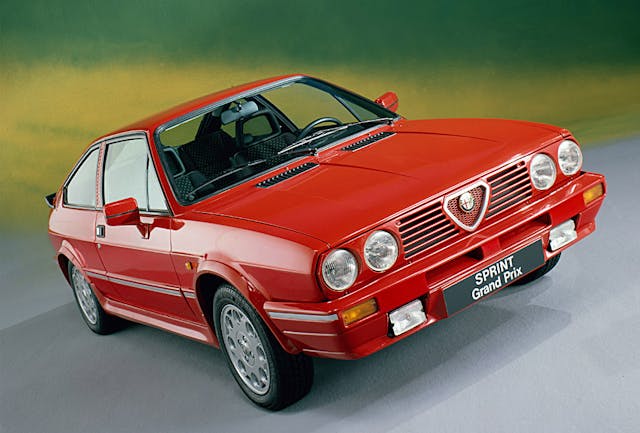
Launched in 1976, the Alfasud Sprint served two key purposes: it gave enthusiasts a smaller and cheaper alternative to the Alfetta GT and it allowed Alfa Romeo to reap the rewards of economies of scale. It was closely related to the Alfasud under the sheet metal, so it was powered by a flat-four engine that drove the front wheels. Could the Alfetta GT’s baby brother really be front-wheel drive? As it turns out, yes!
It helped that the Sprint landed in a segment dominated by front-wheel-drive models. It was priced in the same league as the Renault 15 and the Volkswagen Scirocco (among other coupes) that were also related to front-driven family cars, so the layout was less problematic than it was for the 1990s GTV.
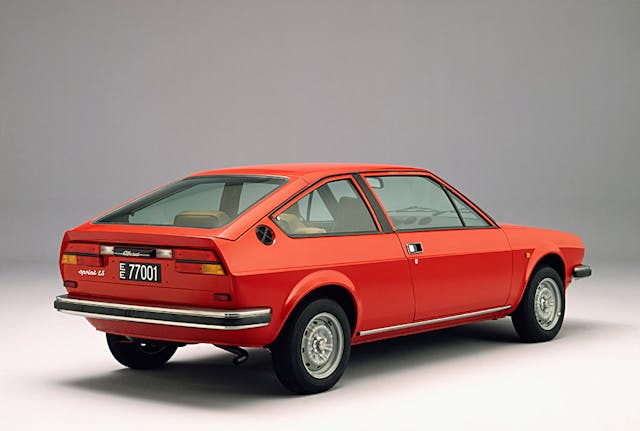
Alfa Romeo didn’t settle for simply making an Alfasud with a sportier design. At launch, the Sprint was powered by a 1.3-liter evolution of its sedan sibling’s 1.2-liter flat-four, tuned to develop 76 horsepower and bolted to a five-speed manual transmission. Bigger engines were made available during the coupe’s long production run, including a 1.5-liter rated at 84 horsepower (and 95 in the Veloce).
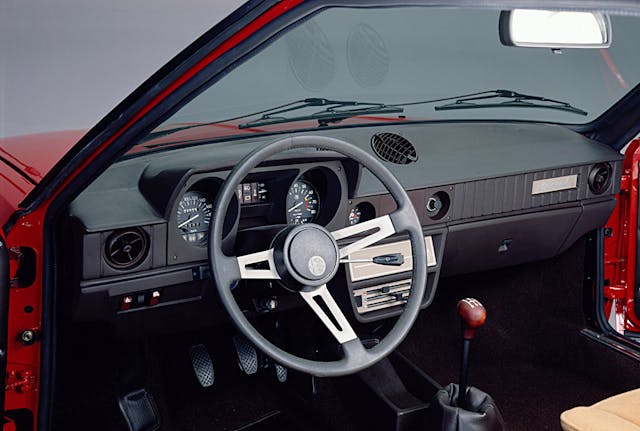
Alfa Romeo gave the Sprint more power by making small but significant modifications, like increasing the compression ratio. Autodelta, the company’s racing department, had completely different plans. In 1982, it built a wild prototype called Sprint 6C by yanking out the flat-four and stuffing a 2.5-liter V-6, sourced from the GTV6, directly behind the passenger compartment. Flared wheel arches and a specific body kit were among the modifications that differentiated the 6C from the standard Sprint, and testing revealed that the 158-horsepower coupe could reach a top speed of 133 mph. It remained a one-off.
The “Alfasud” part of the name was dropped in March 1983 and the Sprint carried on with visual and mechanical updates until 1989. It retired without a successor after Alfa Romeo built 121,434 examples.
Arna (1983–1987)
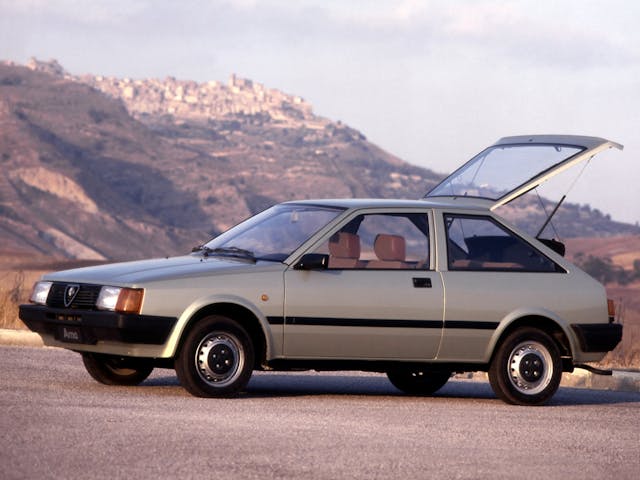
One of the oddest and most obscure cars on the Alfa Romeo family tree is the Arna.
Its name says it all: It’s an acronym that stands for “Alfa Romeo Nissan Autoveicoli.” It stemmed from Alfa Romeo’s wish to plant its stake in a more volume-oriented segment of the market by competing against cars like the Renault 14 and the Fiat Ritmo; remember, Alfa Romeo and Fiat weren’t under the same roof yet. Developing a car from scratch was deemed too expensive, so Alfa Romeo formed a joint-venture with Nissan to gain access to the Cherry (which was sold as the Pulsar in some markets). While the hatchback wore an unmistakably Nissan-esque design, it drove at least somewhat like an Alfa thanks in part to Alfasud-sourced bits, including suspension components and a 1.2-liter, 63-horsepower flat-four. Stuffing Alfa guts in a Nissan shell required making significant modifications to the engine bay.
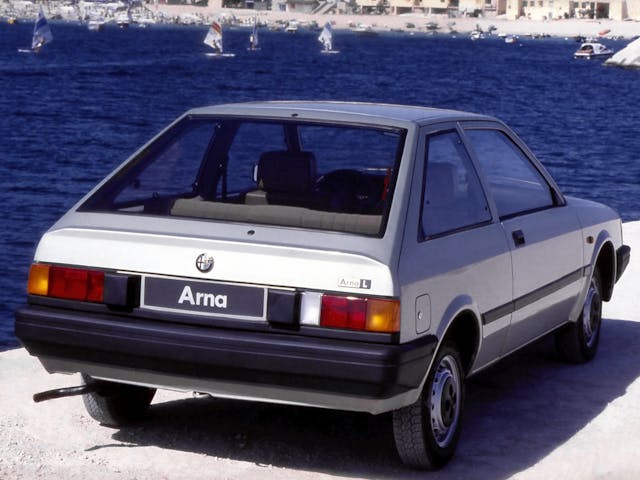
Executives had such high hopes in a car that bridged the gap between sushi and risotto that they built a plant specifically for it, located about an hour east of Naples. It could have worked, too, but the joint-venture had the recipe backwards. Buyers wanted Japanese reliability and Italian styling, not the other way around.
Various delays plagued the Arna project. It wasn’t introduced until the 1983 Frankfurt auto show—about a year behind schedule and, crucially, six months after the 33 designed to replace the Alfasud.
Alfa Romeo marketed two- and four-door versions of the Arna, and it later launched ti-badged variants with up to 95 horsepower, but the car flopped. Precisely 58,894 units had been sold by the time Fiat (which purchased Alfa Romeo in 1986) pulled the plug on the project in 1987. Rumors claim that a second-generation Arna again based on Nissan bones was in the works; if they’re true, the car has never been shown. Fiat converted the Arna factory into a massive engine plant which still operates in 2021.
33 (1983-1995)
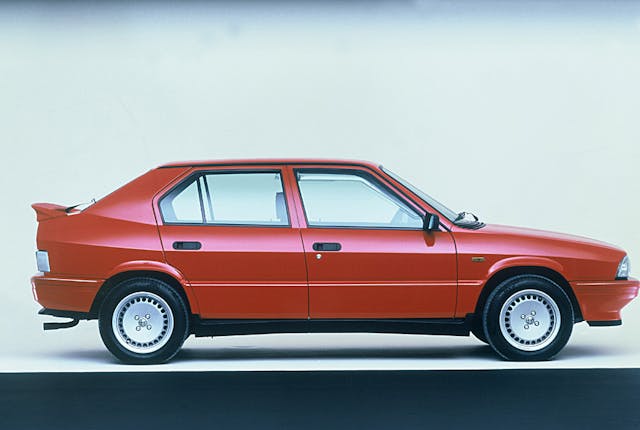
In the ’80s, Alfa Romeo dusted off the 33 nameplate to use on the Alfasud’s successor. Presented at the 1983 Geneva auto show, the 33 kept its predecessor’s basic mechanical layout (including front-wheel-drive and a flat-four engine) but it gained a more modern design that fell in line with the rest of the range. (In doing so, Alfa accurately previewed the 75, known as the Milano in the United States.) It launched as a four-door sedan but executives had big plans for the model: an all-wheel-drive model was introduced at the 1983 Frankfurt auto show and a Pininfarina-designed station wagon called Giardinetta landed in 1984.

Keeping buyers interested in the 33 was crucial, especially once the firm realized that it couldn’t count on the Arna for volume, so updates were relatively frequent. One of the most desirable variants of the 33 was the Quadrifoglio Verde, which made its debut in 1984 with a Sprint-sourced 1.5-liter flat-four tuned to develop 105 horsepower. At the other end of the spectrum, Alfa Romeo made a 1.8-liter straight-three turbodiesel engine rated at 72 horsepower and designed by VM Motori available in 1986.
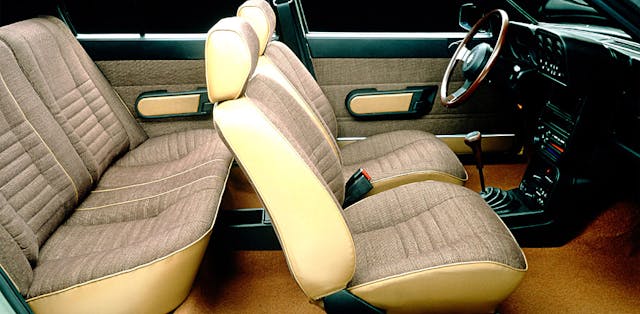
Interestingly, even Alfa Romeo dabbled in hybrid technology during the 1980s—executives believed that hybrids would make good taxis. It teamed up with an Italian firm named Ansaldo to build three working prototypes starting in 1988. The drivetrain consisted of a modified 1.5-liter flat-four, an electric motor mounted directly above the engine, and a nickel-cadmium battery pack installed in the trunk. The front wheels could be driven by the engine, by the motor via a belt, or by both. Although the modifications made to the car were relatively light to facilitate production, the 33 hybrid remained a prototype.
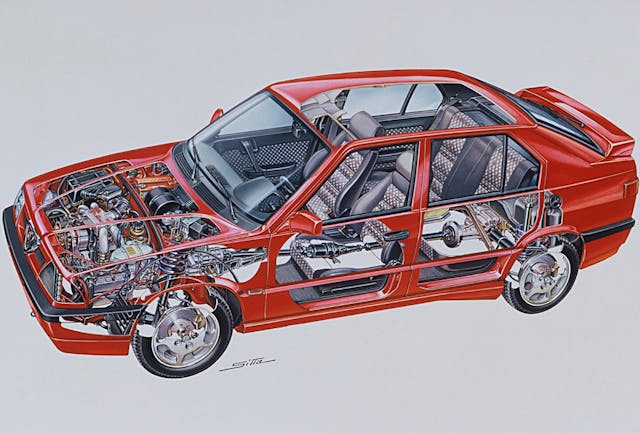
Meanwhile, designers were busily working on giving the 33 its first major facelift. The changes made for 1990 included a redesigned front end inspired by the 75’s, 164-like lights out back, and a more modern-looking interior. These updates (and numerous limited-edition models) carried the 33 to the end of its career in 1995. Alfa Romeo built 989,324 units of the 33. About half were powered by the 1.3-liter flat-four, around 12 percent were station wagons, and all-wheel-drive represented roughly 5 percent of that number.
By 1995, Alfa Romeo was neatly integrated into the Fiat Group and executives were looking for every opportunity to save development costs by sharing parts. The 33 was replaced by the 146 sedan and the 145 hatchback, which were closely related to Fiat’s Brava and Bravo underneath the sheet metal.
